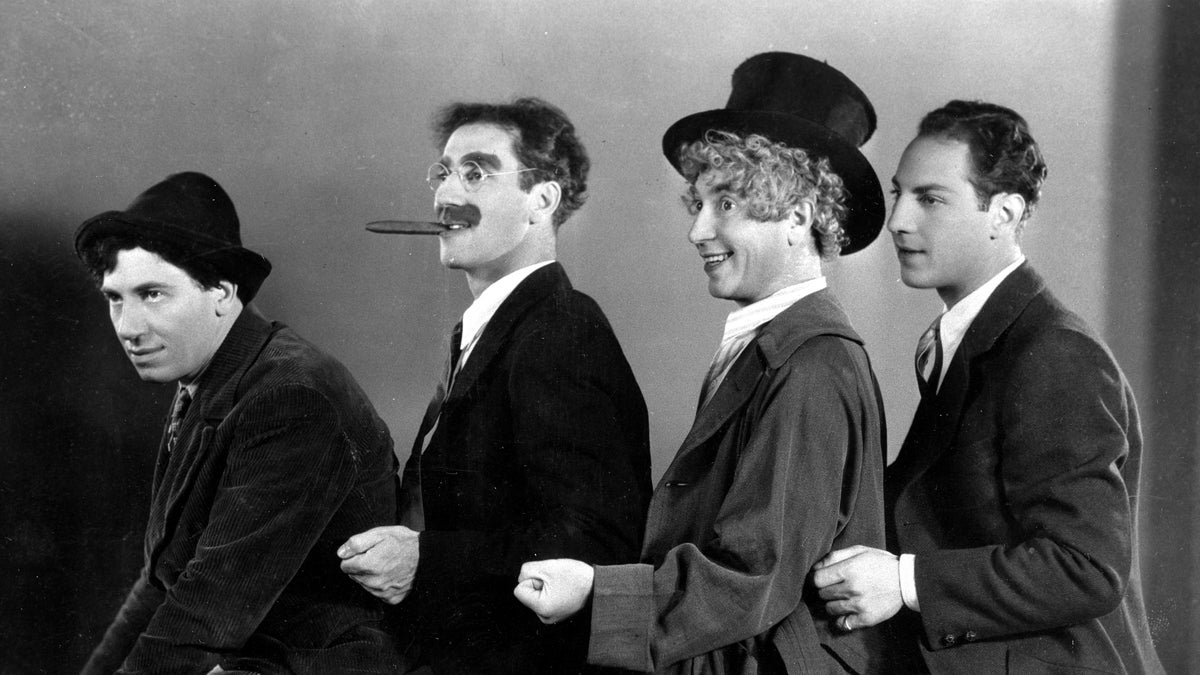Humor is a powerful tool in a doctor’s arsenal
There’s a body of opinion that believes that laughter might, for some illnesses, be the best medicine.

Four of the five Marx brothers, from left, Chico, Groucho, Harpo and Zeppo, pose in 1930. (AP Photo)
“The most wasted of all days is one without laughter.”— E. E. Cummings
Getting ill is no laughing matter, especially if you’re the one suffering. And it’s true that the part of your body called the humerus ends at your “funny bone,” which is not even actually a bone. Which is funny. (It’s the ulnar nerve in your elbow.) But there’s a body of opinion that believes that laughter might, for some illnesses, be the best medicine.
The chief exponent of this line of thought was Norman Cousins, longtime editor of Saturday Review, and whose physicians gave him, at 64, a one-in-five chance of recovering from ankylosing spondylitis a rare and often fatal disease. In his book “Anatomy of an Illness,” Cousins wrote how he surmounted those odds by using the unconventional combination of massive doses of vitamin C and even heftier doses of humor. He eventually died of heart disease at the age of 75.
Working with his personal physician, Cousins set out to answer the question: Is it possible that love, faith, and especially laughter, might have therapeutic value? He followed a systematic regimen of Marx Brothers movies, “Candid Camera” classics, E.B and Katharine White’s “A Sub-Treasury of American Humor,” and Max Eastman’s “Enjoyment of Humor.” He made the joyous discovery that 10 minutes of genuine belly laughter had an anesthetic effect, and he found that his astronomical erythrocyte sedimentation rate declined.
After an account of his illness was published in the New England Journal of Medicine he received 1,000 letters from physicians, most of them in support. Now, Cousins was no fanciful eccentric talking to plants. In fact, he carried out presidential missions abroad; acted as a personal emissary to the pope; headed a project carrying out medical and surgical treatment for victims of the atomic bombing of Hiroshima; organized the program that brought medicine and food to thousands of African children; and was one of the founders of public television.
After leaving the editorship of Saturday Review, he accepted an invitation to join the faculty of medicine at UCLA where he served for several years as an adjunct professor in the program of medicine, law, and human values. In an interview at UCLA, cousins told me that it’s the style of the physician, not the competence of the physician that people use for keeping or changing their doctors.
“I think physicians need to marry art to science,” he said. He quoted an editor of the New England Journal of Medicine who had stated that 85 percent of the illnesses for which people go to the doctor’s office are self-limiting.
Cousins added, “I think that the healing power of the physician comes as much from the belief in his curative powers as from all the medicines and facilities at his command.”
There is a growing body of research to support the theory that laughter may have therapeutic value. According to Cancer Treatment Centers of America, the use of humor has been used in medicine for centuries. Surgeons used it to distract patients from pain. After evaluating participants before and after a humorous event video, researchers have found that episodes of laughter help to reduce pain, decrease stress-related hormones, and boost the immune system of participants. Moreover, some studies have shown that laughter therapy can enhance oxygen intake; stimulate the heart and lungs; relax muscles throughout the body; and trigger the release of endorphins, the body’s natural painkillers.
CTCA introduced laughter therapy at its division of mind-body medicine. The head of that division, Dr. Catherine Puckett, said that the 8-year-old daughter of a CTCA patient who attended laughter club said afterwards, “I never thought about laughing every day, but now I realize I can. Even when I don’t feel happy, I can still laugh and feel better.”
Richard Gordon, a British physician and ship’s doctor, who has written dozens of books on humor in medicine, such as “Doctor in the House” and “Doctor at Sea,” is himself a bit of a humorist. And he says that it’s fitting, though not at all funny, that as a humorist he suffers from one of the few diseases that evoke laughter, not pity — gout.
I wish I could say that Norman Cousins was able to overcome his affliction. However, as he taught generations of medical students the value of humor in therapy, his influence lives on. As for Gordon, he soldiers on in his 90s, fortified no doubt by the Royal Navy’s signature drink of pink gin.
WHYY is your source for fact-based, in-depth journalism and information. As a nonprofit organization, we rely on financial support from readers like you. Please give today.





